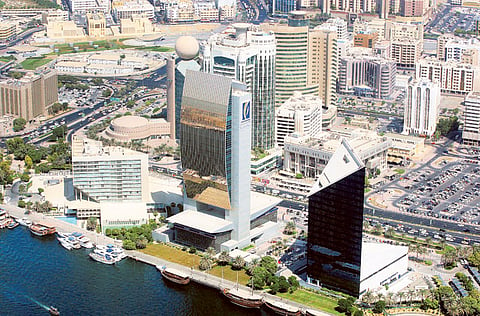Bank profits seen surging on loan growth and declining provisions
Improved fee, commission and brokerage income to boost second quarter profits

Dubai: Consistent decline in provisions against non-performing loans (NPLs) and improved loan growth, especially in the retail segment is widely seen booting profits of UAE banks in the second quarter of this year.
With the baking industry in the country is expected to start announcing their results starting this week, many in retail banking industry are confident that they have had a strong quarter with robust growth in assets and margins compared to the same period last year and the first quarter of this year.
In the first quarter of this year most of the UAE banks achieved double digit retail asset growth and profit growth in retail business. With no significant change in the overall business environment, analysts expect banks to report strong second quarter figures.
“There has been no letup in the retail assets and margins growth, this will be another bumper quarter for us and many in others in the industry,” said the retail banking head of a local bank.
Although it was widely anticipated that the introduction of credit bureau would dampen retail credit growth in the initial phase, bankers said there is no evidence to suggest that it has adversely impacted retail credit growth.
Bankers admit that they are facing margin compression on retail lending as abundance of liquidity and strong competition from within the industry forcing the spreads (the difference between rates paid on deposits and loans). Despite the margin pressure on lending, banks have seen significant growth in fee income as capital market activity has picked up pace in the second quarter.
With capital market fund raising activity on the rise, especially in bonds and sukuk issuance, fee incomes have seen a significant rise. Also, the improved trading volumes on local markets and revival of mergers and acquisition deal flows have boosted fee and brokerage incomes of banks.
Undoubtedly, the big boost to bank profitability comes from asset quality improvement. The NPLs–to-total loans ratio of UAE banks is estimated to have declined from the peak of 8.7 per cent in 2012 to 8.1 per cent in 2013 and is projected to decline further to 7.4 per cent for the full year 2014, according to a recent forecast by the Institute of International Finance (IIF), a Washington based global association of financial institutions.
The IIF recently said the soundness indicators of the UAE banking system have further improved this year with strong improvement in capitalisation levels, increase in profitability and further easing of liquidity situation. The 2013 full-year results showed the UAE banks showed an average year-on-year increase of 14 per cent in net profits while the first quarter profits of banks show a strong improvement in profitability.
“The largest eight banks, which account for more than 80 per of the total assets of the banking system have recorded impressive growth in the first quarter of 2014 with profits increasing by 21 per cent on average, year-on-year and the outlook for the UAE banks in 2014 remains favourable, supported by robust non-hydrocarbon growth, low interest rates and a further increase in real estate prices,” said Garbis Iradian, Deputy Director of Institute of International Finance.
The Financial Soundness Indicators (FSIs), an important component in the Central Bank’s financial sector surveillance point to the robust systemic strength of the UAE banking sector, according to the latest Financial Stability Report.
According to the report, the UAE banks remain highly capitalised with a capital adequacy ratio of 19 per cent as at the end of December 2013, slightly below the 21 per cent in 2012. A small decline in capital adequacy is attributed to partial or full repayment of Tier-2 capital granted by the Ministry of Finance in 2009. Tier-1 capital stood at 17.2 per cent and was more or less unchanged from 2012.
Banks continue to maintain high levels of capital to address risks such as the concentration risk in their loan portfolios and the rescheduling or restructuring of some corporate loans.
According to the Financial Stability Report, non-performing loans (NPLs) of the UAE banking sector appears to have peaked and it has started to gradually decline in the last quarter of 2013 for the first time since 2007. As at December 2013, the UAE banking system had an NPL ratio of 8.4 per cent representing total classified loans of Dh107 billion.
Sign up for the Daily Briefing
Get the latest news and updates straight to your inbox



